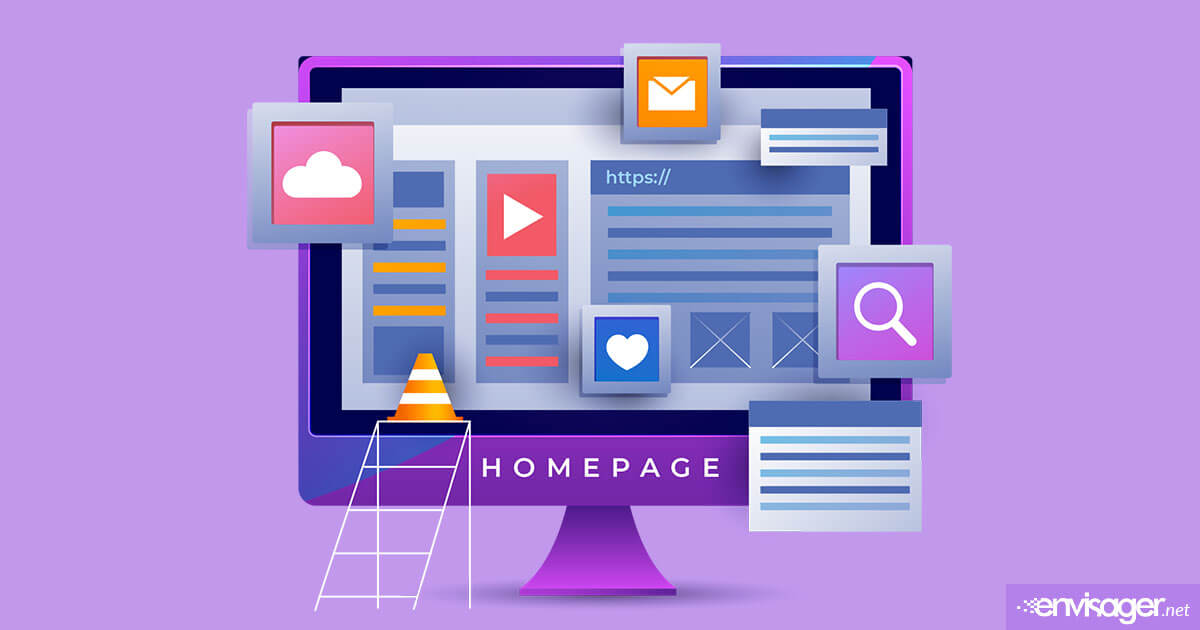3 Important Things That Make Your Business Website Look Outdated

outdated business website with poor functionality is one of the leading causes of website abandonment. In fact, a recent study indicates that almost 50% of people will leave a website if it’s difficult to use.
In this article we’ll examine 3 top signs your business website look outdated may and need redesign services. We’ll tell you the issues, explain the problems they pose and provide suggestions to fix those issues.
Let’s get started.
1. Slow Loading Outdated Business Website
In essence, a First Contentful Paint of 1.5 seconds or less will provide a good user experience. To ensure most of your users are included, being in the 75th percentile of page loads is a good threshold. Of course, this needs to be segmented across desktop and mobile devices.
First Contentful Paint is when a browser renders the first bit of content letting users know the page is loading.
Some common causes of slow page load times include:
- Images are not optimized for mobile or not optimized at all.
- Pages contain too much media or are very long.
- Embedded content from another site that affects other content loading.
- Controls like search filters and pagination causes an extra page load.
How To Solve This Issue
There are many things you can do to improve the page load times of your website. For example:
- Use a content delivery network (CDN). Doing so helps your content to be delivered faster because it caches it closer to the user.
- Employ lazy loading. Lazy loading prevents website content from loading until it’s needed. It saves system resources as well as improves site performance.
- Cache static content. When you cache static website content, it doesn’t have to be reloaded when people visit your site. Conversely, an outdated business website uses unnecessary system resources.
- Optimize images. You should first optimize images from your graphics program before uploading to your site. After uploading, you can optimize more using online tools such as TinyPNG compression.
- Minimize HTTP requests. Reducing the number of HTTP requests a user makes to your server for content helps pages load faster.
2. Business Website Look Outdated When Content-Heavy
Oftentimes, websites that aren’t built by professional website designers are very content-heavy. This causes confusion for users because they don’t understand what you want them to do. And what your business is all about.
As a result, this causes two main issues:
- Users may discontinue interacting with your content because they’re not sure they’re in the right place.
- New users are confused about your company’s purpose.
Ways To Fix This Problem
There are a multitude of things you can do to make your website easier to understand and less content-heavy. For instance:
- Use visuals. Using visuals can be helpful in better explaining your content.
- Simplify the layout. Break down your content into smaller, easier to digest sections.
- Focus on key content. Instead of using a lot of text to persuade users, just focus on a few key content pieces.
- Write shorter paragraphs. Using lists alongside shorter paragraphs makes content easier to read.
- Create an appealing ‘about us’ page. Instead of lengthy text, use facts and figures, imagery, and headlines to convey what your business does at a glance.
3. SEO Best Practices Not Used in the Website Design
Search engine optimization (SEO), is the practice of optimizing your website for an optimal position in search engine search results. Obviously, the higher your website appears in search results, the better chance people will find and visit your website. So, optimizing your website for search is very important.
If you’re not implementing SEO best practices, then it’ll be challenging to improve your website’s ranking.
When a website design doesn’t allow for SEO bast practices, these problems can arise:
- Even when users are specifically looking for your company, your website doesn’t appear in search results.
- Many pages on your website are not indexed by search engines.
- There’s an inconsistency between the meta tags that appear in search results and the content on your page.
How To Solve This Problem
An outdated business website will usually not have current technologies and tools integrated. So, not only does your business website look outdated, it also contains outdated technologies. But there are things you can do to improve your search rankings and optimizing your website.
- Use redirects. When content has been removed or your url changes, proper protocol is to redirect that content to another page. Or use a 410 header for content deleted. Either way, it avoids receiving the dreaded “page not found” message.
- Implement semantic markup. This helps search engines and other devices to understand the context and importance of web pages.
- Include a sitemap. An xml sitemap helps search engines to find and crawl your content properly.
- Integrate analytics. Event tracking and analytics shows you what content is the most successful at attracting and converting users.
- Use correct metadata. Using the right focus keywords, descriptions and titles, you can optimize your website for search engines. And to figure out what your target audience is looking for, Ahrefs and Moz are useful keyword research tools.
- Responsive design. A website with a responsive design ensures your content functions and looks great on all device screens.
Wrapping It Up
If your business website look outdated, on the surface it will not provide a good user experience. Moreover, an outdated business website uses unnecessary system resources and lacks the technology for an overall optimal experience. To ensure that your business website is modern and up-to-date, contact our website design agency today. We’re experts at helping small businesses claim their place on the web!

Dr. Amelia Davis
WEB DEVELOPMENT DIRECTOR
Dr. Amelia Royster-Davis is a Doctor of Education and an Instructional Designer. As the Director of Web Development at Envisager Studio, her primary focus is to lead the web development team in building modern, responsive websites. In her spare time, she writes about web development, UI and UX.


